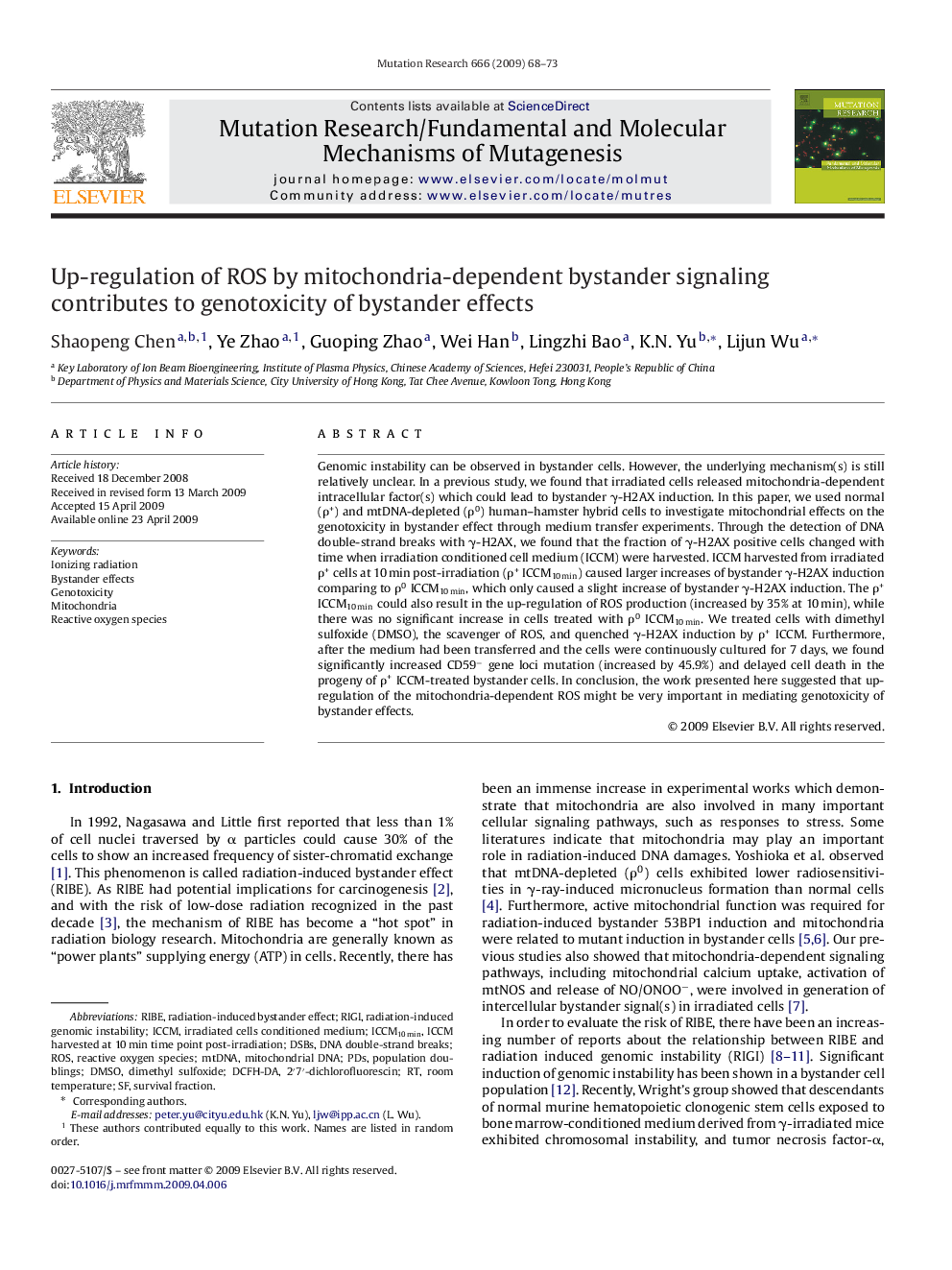| Article ID | Journal | Published Year | Pages | File Type |
|---|---|---|---|---|
| 2147014 | Mutation Research/Fundamental and Molecular Mechanisms of Mutagenesis | 2009 | 6 Pages |
Abstract
Genomic instability can be observed in bystander cells. However, the underlying mechanism(s) is still relatively unclear. In a previous study, we found that irradiated cells released mitochondria-dependent intracellular factor(s) which could lead to bystander γ-H2AX induction. In this paper, we used normal (Ï+) and mtDNA-depleted (Ï0) human-hamster hybrid cells to investigate mitochondrial effects on the genotoxicity in bystander effect through medium transfer experiments. Through the detection of DNA double-strand breaks with γ-H2AX, we found that the fraction of γ-H2AX positive cells changed with time when irradiation conditioned cell medium (ICCM) were harvested. ICCM harvested from irradiated Ï+ cells at 10 min post-irradiation (Ï+ ICCM10 min) caused larger increases of bystander γ-H2AX induction comparing to Ï0 ICCM10 min, which only caused a slight increase of bystander γ-H2AX induction. The Ï+ ICCM10 min could also result in the up-regulation of ROS production (increased by 35% at 10 min), while there was no significant increase in cells treated with Ï0 ICCM10 min. We treated cells with dimethyl sulfoxide (DMSO), the scavenger of ROS, and quenched γ-H2AX induction by Ï+ ICCM. Furthermore, after the medium had been transferred and the cells were continuously cultured for 7 days, we found significantly increased CD59â gene loci mutation (increased by 45.9%) and delayed cell death in the progeny of Ï+ ICCM-treated bystander cells. In conclusion, the work presented here suggested that up-regulation of the mitochondria-dependent ROS might be very important in mediating genotoxicity of bystander effects.
Keywords
Related Topics
Life Sciences
Biochemistry, Genetics and Molecular Biology
Cancer Research
Authors
Shaopeng Chen, Ye Zhao, Guoping Zhao, Wei Han, Lingzhi Bao, K.N. Yu, Lijun Wu,
